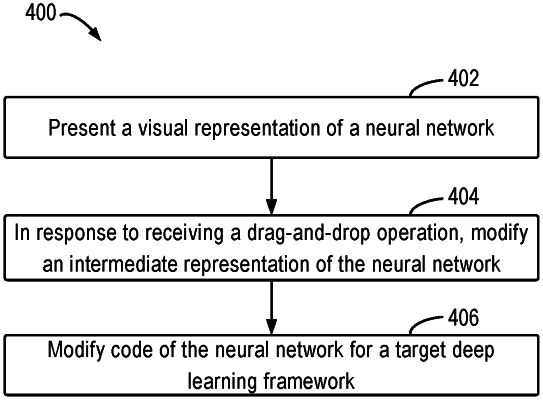| CPC G06F 8/34 (2013.01) [G06F 3/0486 (2013.01); G06N 3/082 (2013.01)] | 13 Claims |

|
1. A computer-implemented method, comprising:
presenting a visual representation of an artificial neural network, wherein the visual representation of the artificial neural network includes graphical elements representing layers of the artificial neural network;
in response to receiving a drag-and-drop operation on the graphical elements, modifying an intermediate representation of the artificial neural network, wherein the intermediate representation of the artificial neural network is independent of a deep learning framework and the drag-and-drop operation is configured to modify connections between the graphical elements including automatically connecting a first graphical element to a second graphical element of the graphical elements;
modifying, based on the intermediate representation of the artificial neural network, code of the artificial neural network for a target deep learning framework; and
in response to receiving an instruction for changing the target deep learning framework to a further target deep learning framework, determining code of the artificial neural network for the further target deep learning framework based on the intermediate representation of the artificial neural network.
|